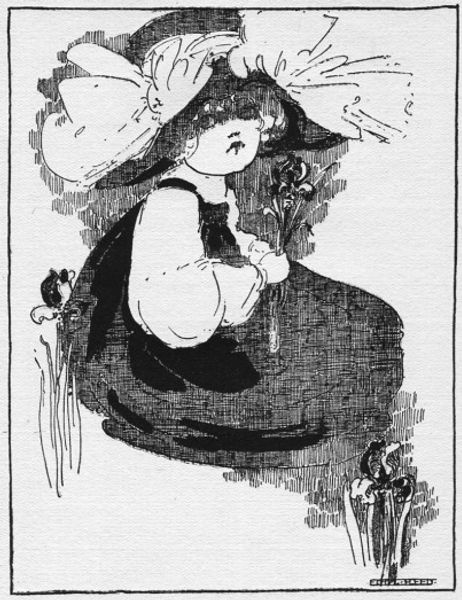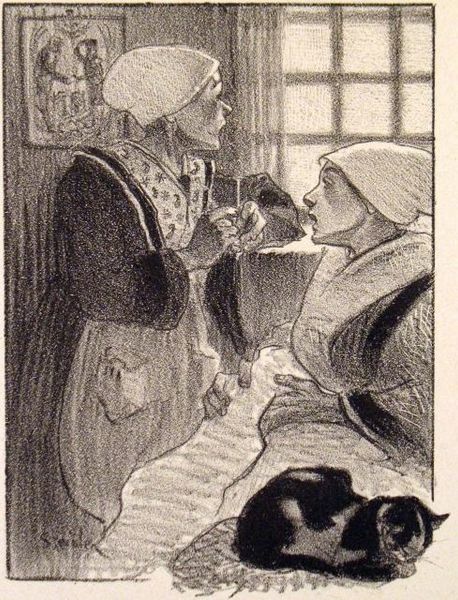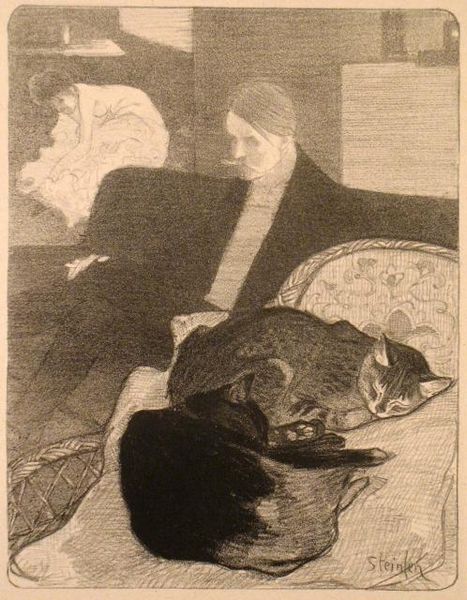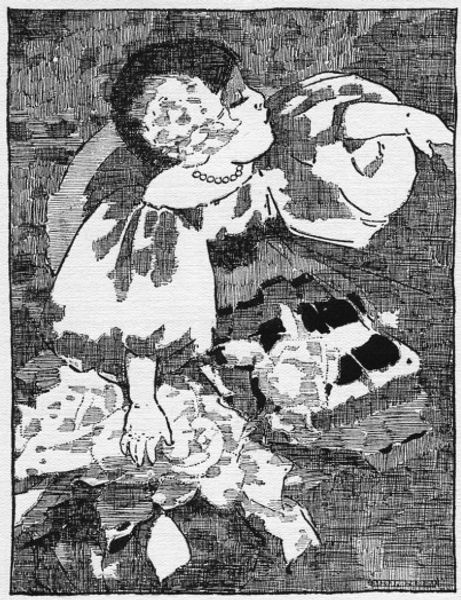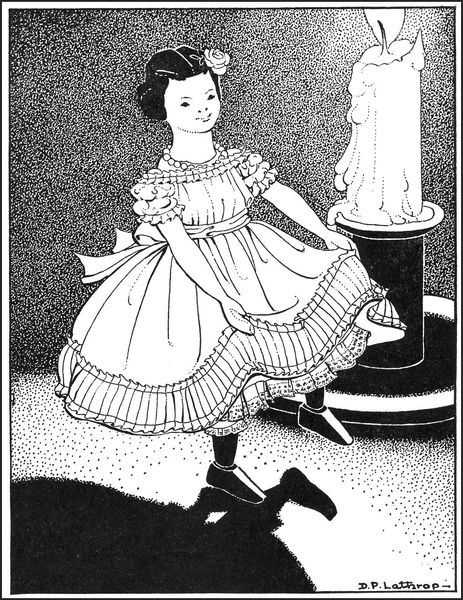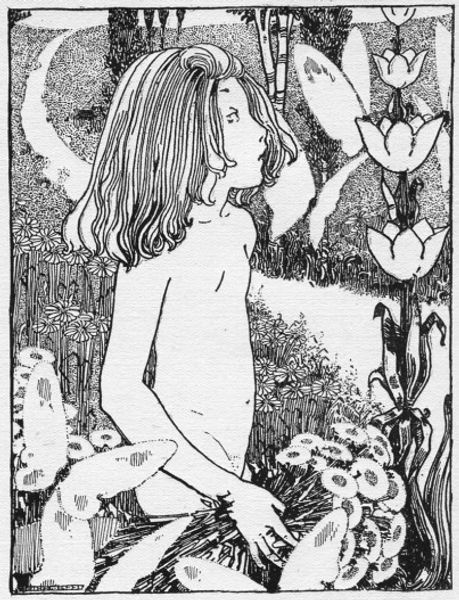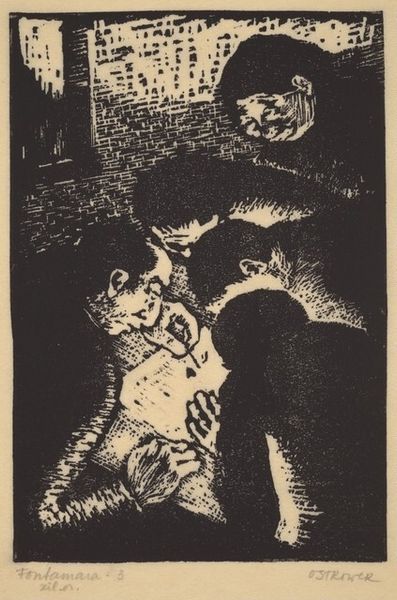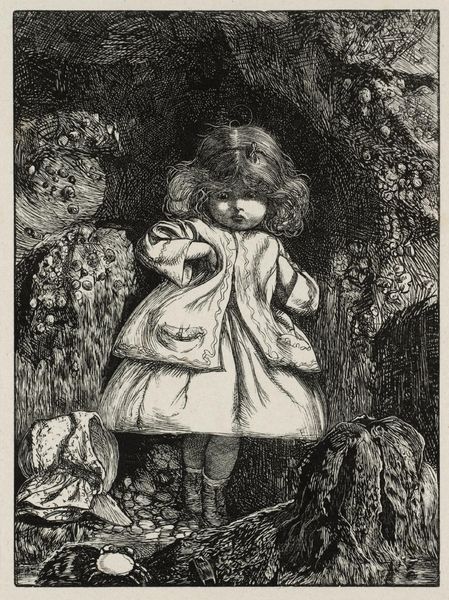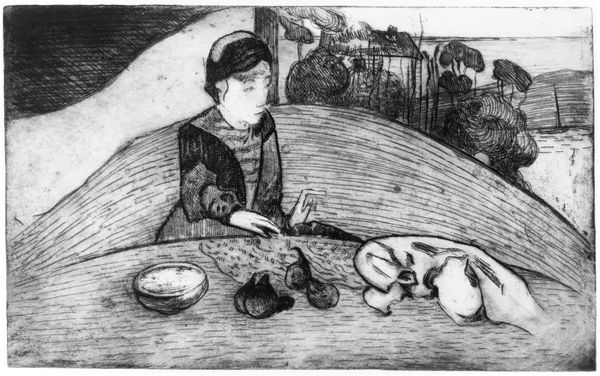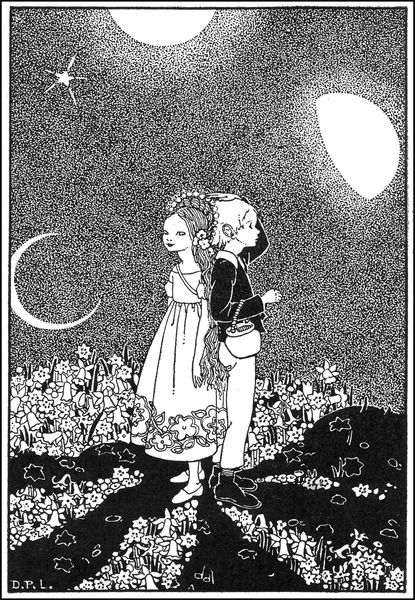
drawing, paper, ink
#
drawing
#
pen illustration
#
paper
#
ink line art
#
ink
#
line
#
symbolism
Copyright: Public domain
Editor: This is an illustration by Ethel Reed from "In Childhood's Country" by Louise Chandler Moulton, created in 1896. It's an ink drawing on paper and the texture really strikes me. The hatching is so deliberate. What do you see in this piece? Curator: I'm drawn to how Reed uses the materials, the ink and paper, to explore social context. The line work, almost obsessive in its detail, highlights the labor involved. Consider the Victorian era’s burgeoning market for illustrated books and prints. Was this piece produced to cater specifically to affluent women interested in motherhood and aestheticism? Editor: That's interesting! I hadn't considered the social implications of the material choice. The precise linework gives it this somewhat mass produced quality as well. It makes me think about reproducibility and distribution, reaching potentially wider audiences... Curator: Exactly! The use of ink, lends itself to printmaking, suggesting mass production and the commodification of childhood itself. And think about the intended audience – were they buying into an idealized vision of domesticity? Editor: Perhaps the cat points to a consumer item in many bourgeois families? A type of comfort, one could say... Curator: The cat is the most spontaneous element here and contrasts sharply with the highly stylized depiction of the child and that curious ornament dangling precariously by what appears to be a thread, so very separate and distinct. The cat points to the growing presence of animals that began to populate bourgeois households in Europe and the USA as family pets and members. This reinforces, in fact, this particular image and composition, by signaling that those familiar comforts are made possible, thanks to the proliferation of ink illustrations and the popularization of childhoods’ consumer market and values. What do you think of that contrast? Editor: That makes me see the illustration in a completely different light. Thank you! It's fascinating to think about the materials not just as artistic choices, but as a reflection of the social landscape. Curator: Indeed. It invites us to see how artistic production is embedded within broader economic and cultural forces. A view onto culture itself and childhood fantasies within this era!
Comments
No comments
Be the first to comment and join the conversation on the ultimate creative platform.
